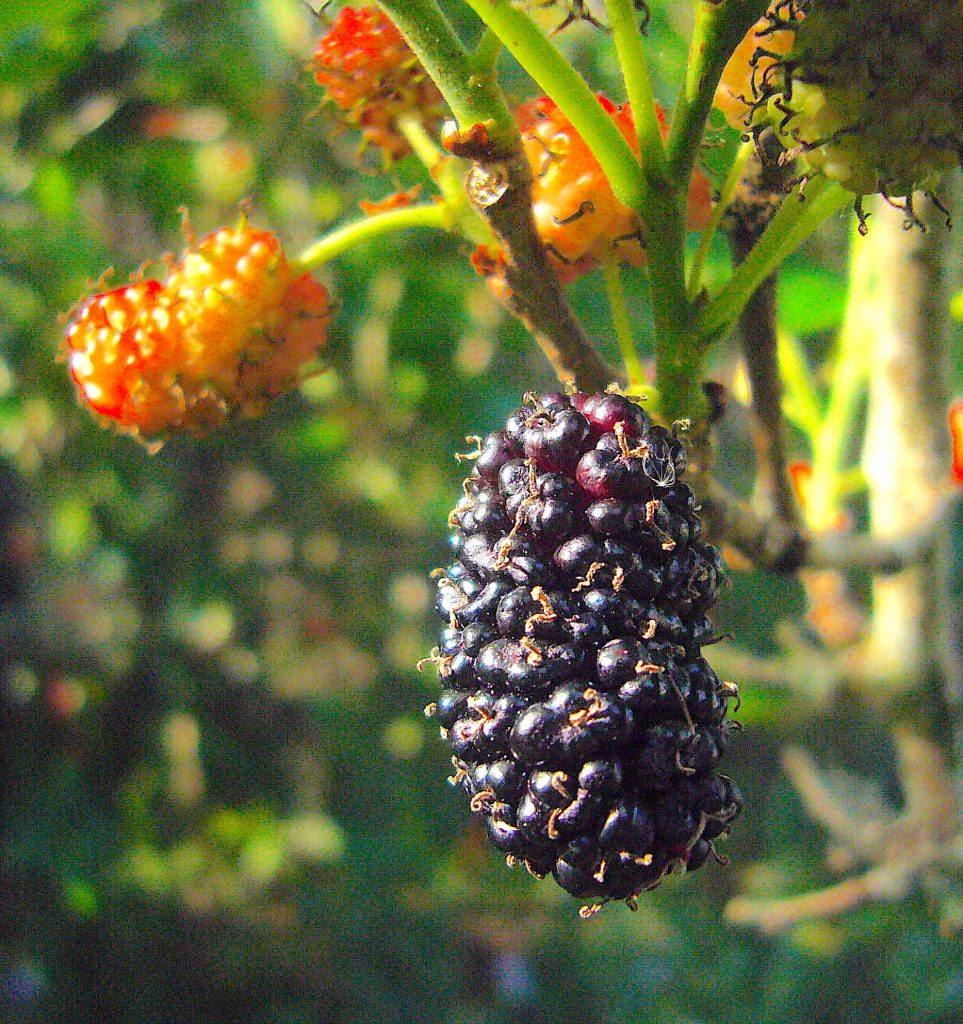
All newsletters and photos by Green Deane
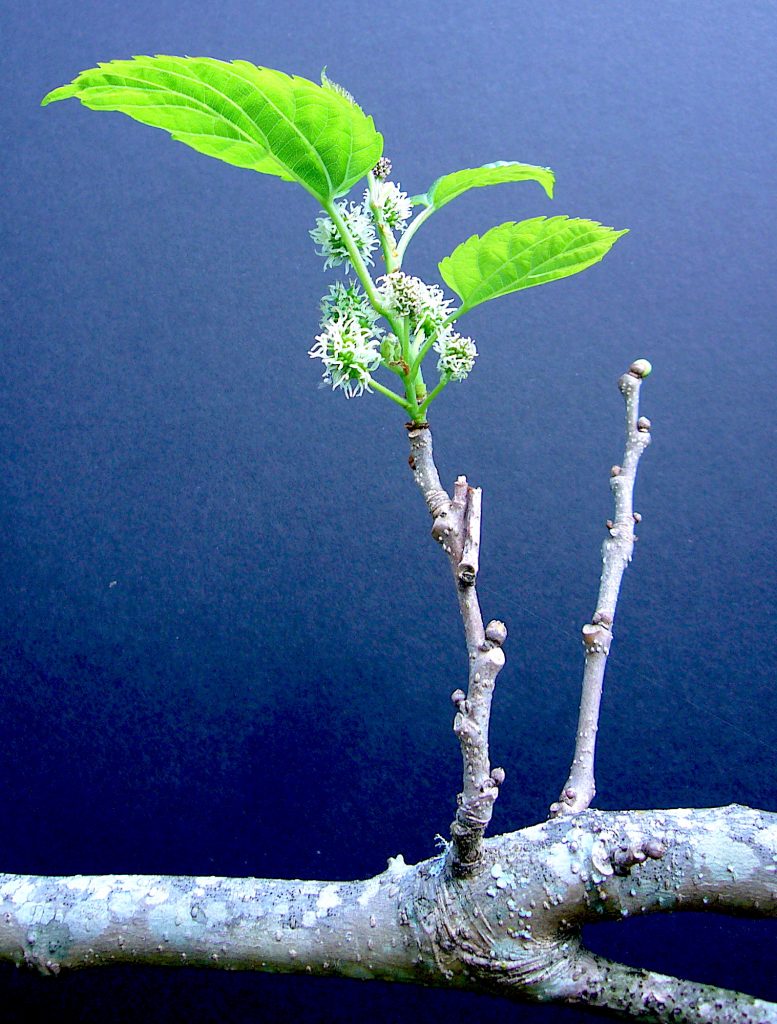
A few newsletters ago it was mentioned Mulberries were in blossom (photo left.) There’s plenty of green fruit now and a few early-ripening ones. Resembling over-grown blackberries but completely sweet you eat all of it except the short stem… or you can eat that, too. In fact, I just nibble them off the tree. Like many fruit trees they are highly seasonal, producing for perhaps a month though with a bit of travel you can extend the season. You have to work with its schedule not yours. The Mulberry is also considered a trash tree locally because it drops a lot of purple-black berries on oh-so-clean sidewalks and manicured lawns. In fact, they’ve even bred a fruitless ornamental variety … have your mulberry but don’t eat it, too… Don’t forget the young leaves are edible cooked. To read more about the Mulberry go here. To see my video on Mulberries, click here.
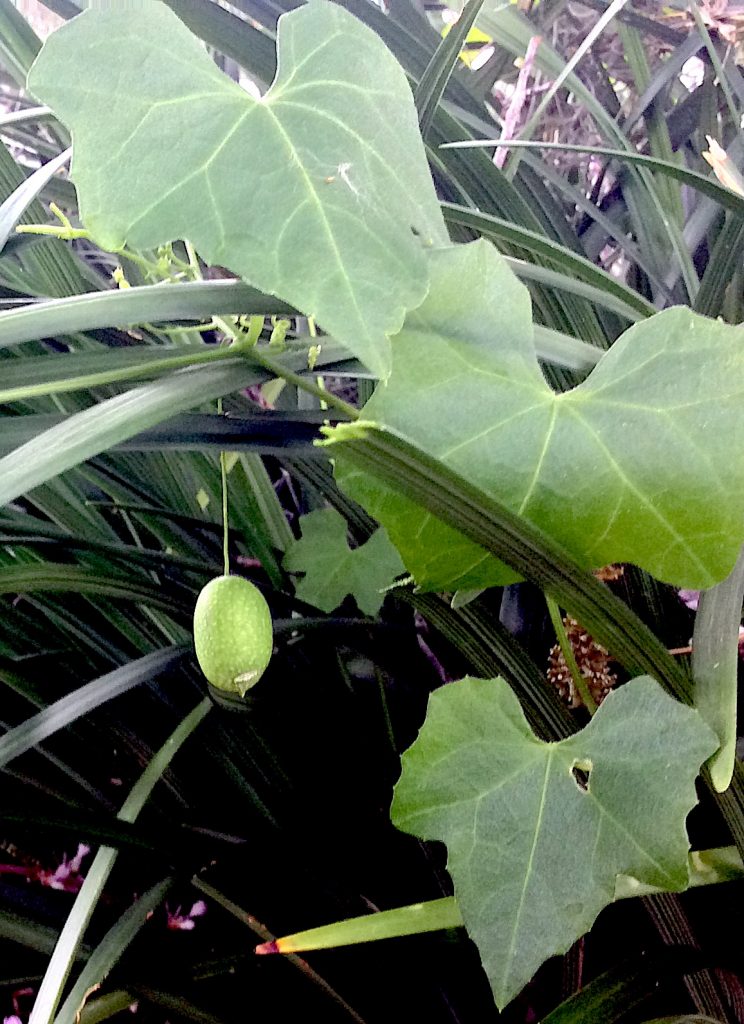
Creeping Cucumber are starting to fruit. In Sarasota the fruit was not only ready for picking but some fruit were ripe enough to collect seeds for propagation. Mid-state they are small vines not quite blossoming, and, in Jacksonville the frost-intolerant cuke is barely up. Mentioned many times in recent newsletters the Creeping Cucumber makes a nice trail-side nibble and salad ingredient. Oddly they don’t pickle well but I suspect that might be caused by not removing the blossom end before pickling. To read more about the jelly-bean size cuke click here. To see my video on these mouse cucumbers go here.
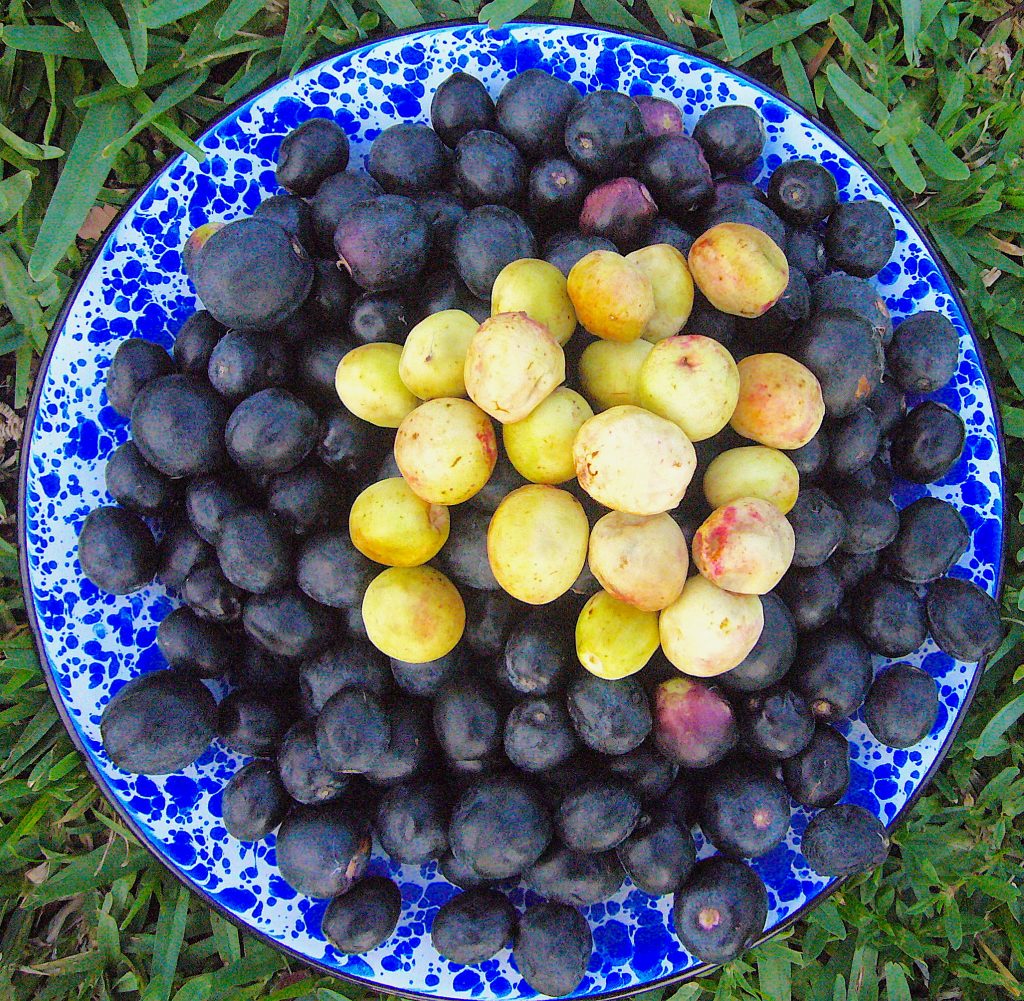
While it is too early for a lot of Coco-plums we found a few in Port Charlotte. They do resemble a small plum with an almond-like seed inside. Made into jam and jellies or eaten out of hand, the pulp is often disparaged by writers and called forgetable. It is mildly sweet and has a texture similar to wet marshmallow fluff. It is not a competitive commercial texture but tasty enough. The seed however, removed from it’s woody hull, tastes like Granola. Ripe Coco-plums can be red, white or blue, or dark purple. The most common variety used in landscaping in south Florida is the Chrysobalanus icaco var. pellocarpus, the so-called “red tip” because its young leaves are ruddy. Oddly Coco-plums are about six weeks apart from the west and east coast of Florida at the same latitude. I have noticed the difference many times. You can read about Coco-plums here. My video is here.
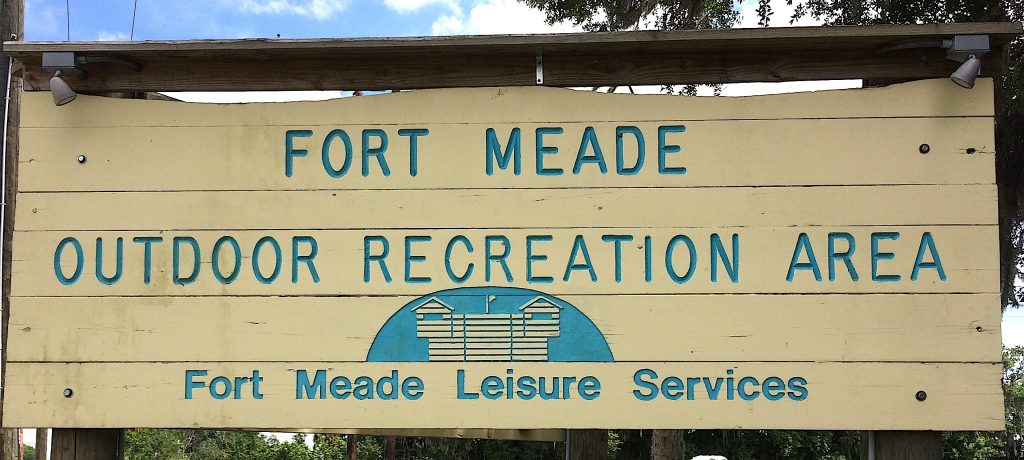
Foraging classes this week include a new location, Ft. Meade Outdoor Recreation Area. This is about a mile east of Ft. Meade, Fla., which is really getting close to the true center of the state. This will be my first class at this location so there is a lot of exploring to do Saturday. And the next day, Sunday, my class is in West Palm Beach. More about that below.
Saturday, March 30th: Ft. Meade Outdoor Recreation Area, 1639 Frostproof Hwy, Fort Meade, FL 33841. (Frostproof Highway is also Route 98.) 9 a.m to noon. Meet at the brown bathrooms in the middle of the park which is due south from the highway.
Sunday, March 31st, Dreher Park, 1200 Southern Blvd., West Palm Beach, 33405. 9 a.m to noon. Meet just north of the science center in the north section of the park.
Saturday, April 6th, Florida State College, south campus, 11901 Beach Blvd., Jacksonville, 32246. 9 a.m. to noon. We will meet at building “D” next to the administration parking lot.
Sunday, April 7th, Boulware Springs Park, 3420 SE 15th St., Gainesville, FL 32641. 9 a.m. to noon. Meet at the picnic tables next to the pump house.
Saturday, April 20th, Blanchard Park, 10501 Jay Blanchard Trail, Orlando, FL 32817. 9 a.m. to noon. Meet next to the tennis courts by the YMCA building.
Saturday, April 27th, Red Bug Slough Beneva Road, Sarasota, FL, 34233. 9 a.m. to noon.
To learn more about the classes or to register for one go here.
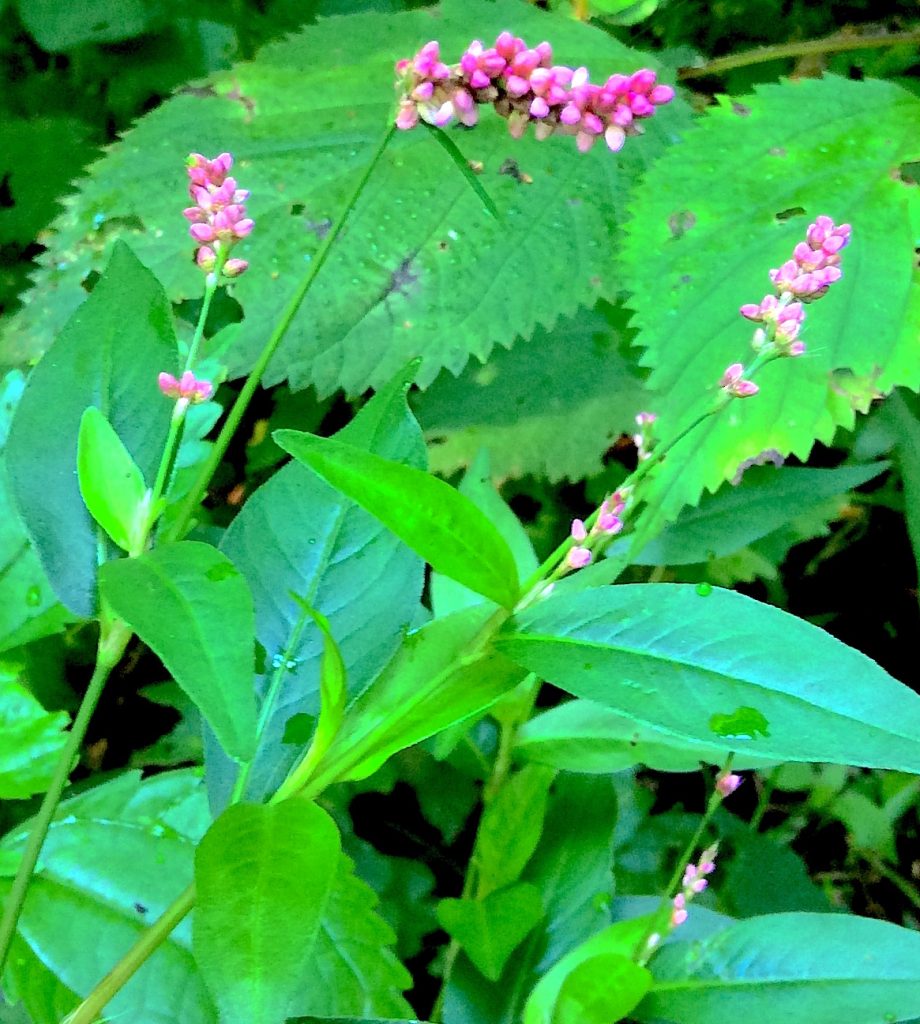
In West Palm Beach, Sunday’s class location, the last of the “winter” foragables easy to find: Pellitory, Poor Man Pepper Grass, and False Hawks Beard. You can see Amaranth and a lot of pink-blossomed Oxalis. We usually nibble on Smilax tips,Purslane, a few dried Dove Plums, just-sprouting and the ever-popular blossoms of the Blue Porterweed, which is something of a Green Deane Special being the first foraging website to mention its edibility. The class location, Dreher Park, also has an excellent large Silk Floss Tree (Ceiba speciosa.) Totally covered with huge thorns it has an edible seed oil. Perhaps it is not a practical edible but it is an impressive sight. There is also a Tropical Almond, always tasty. My video on the Tropical Almond is here.
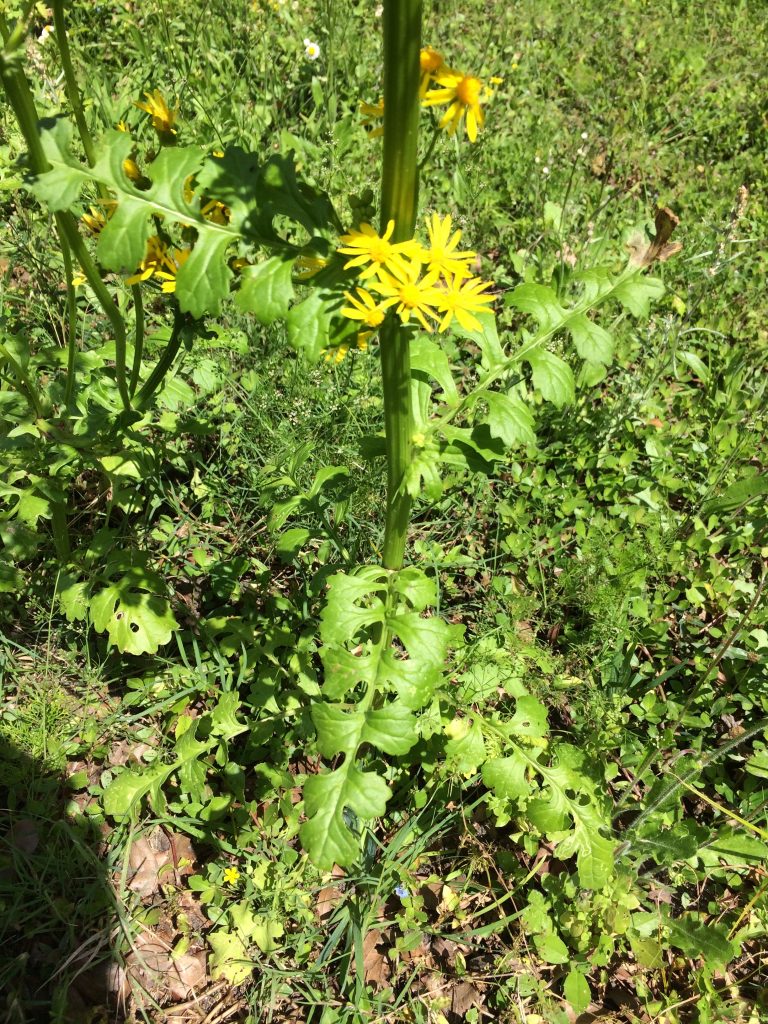
A couple of non-edible flowers were seen this week, both of which should be avoided. The Mexican Poppy is starting its seasonal run. It can have yellow or white blossoms and is extremely well-armed. Covered with prickles it visually it carries a stern warning: Don’t mess with me. The Mexican Poppy might have some medicinal uses but is not edible. I see it often near and about railroad tracks, sometimes in arid pastures. The other species and potentially more dangerous is Butterweed. I don’t know which of the two are more toxic but Butterweed has the complication of resembling wild mustard when young. When it blossoms Butterweed clearly is not a mustard but from a short distance away and a quick glance there is a resemblance. It also does not have a mustard taste. In fact it has a mild flavor but DON’T EAT IT. The species contains pyrrolidines. The plant can put you in the hospital and threaten your life. It will damage your liver.
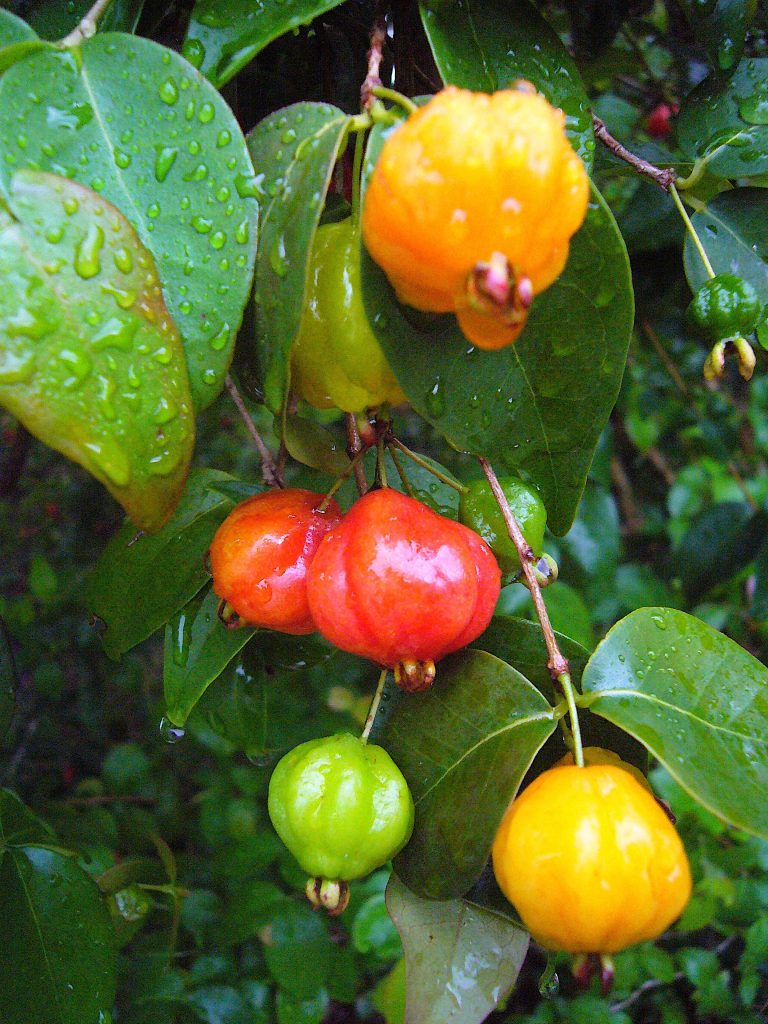
During our foraging class in Port Charlotte this last week we found some early ripenening Surinam Cherries. That location also has two variety of the Suriname Cherry, black fruited and deep red fruited. Surinam Cherries taste awful until totally ripe. Even then many folks do not like the flavor. Your pallet will either say this is food or this is not. No in betweens. Seriously. You either eat them again or never again. But if you are going to eat them make sure they are very ripe. In the black/dark purple variety they are indeed black when totally ripe. With the red-fruiting variety you want a deep fire-truck red (with blue tones) not an orange Ferrari red. Some people like the red ones better, others the black. I like both but am trying to grow the latter from seeds. And while they are everywhere locally there was one particularly nice example on the West Orange Bike trail about a quarter mile east of the Killarney Station. It was cut down as was a fruiting persimmon. Eliminating fruiting trees from public land reduces liability, or so the lawyers will tell you. To read more about Surinam Cherries go here. (And I realized only today that I do not have a video on the Surinam Cherry. Will have to take care of that.)

Want to identify a plant? Looking for a foraging reference? Do you have a UFO, an Unidentified Flowering Object you want identified? On the Green Deane Forum we chat about foraging all year. And it’s not just about warm-weather plants or just North American flora. Many nations around the world share common weeds so there’s a lot to talk about. There’s also more than weeds. The reference section has information for foraging around the world. There are also articles on food preservation, and forgotten skills from making bows to fermenting food. One special section is “From the Frightening Mail Bag” where we learn from people who eat first then ask questions later. You can join the forum by clicking on “forum” in the menu.

All My Videos are available for free on You Tube. They do have ads on them so every time you watch a Green Deane video I get a quarter of one cent. Four views, one cent. Not exactly a large money-maker but it helps pays for this newsletter. If you want to see the videos without ads and some in slightly better quality you can order the DVD set. It is nine DVDs with 15 videos on each for a total of 135 videos. Many people want their own copy of the videos or they have a slow service and its easier to order then to watch them on-line. The DVDs make a good gift for that forager you know especially as spring is … springing. Individual DVDs can also be ordered or you can pick and choose. You can order them by clicking on the button on the top right hand side of this page (if your window is open wide enough.) Or you can go here.
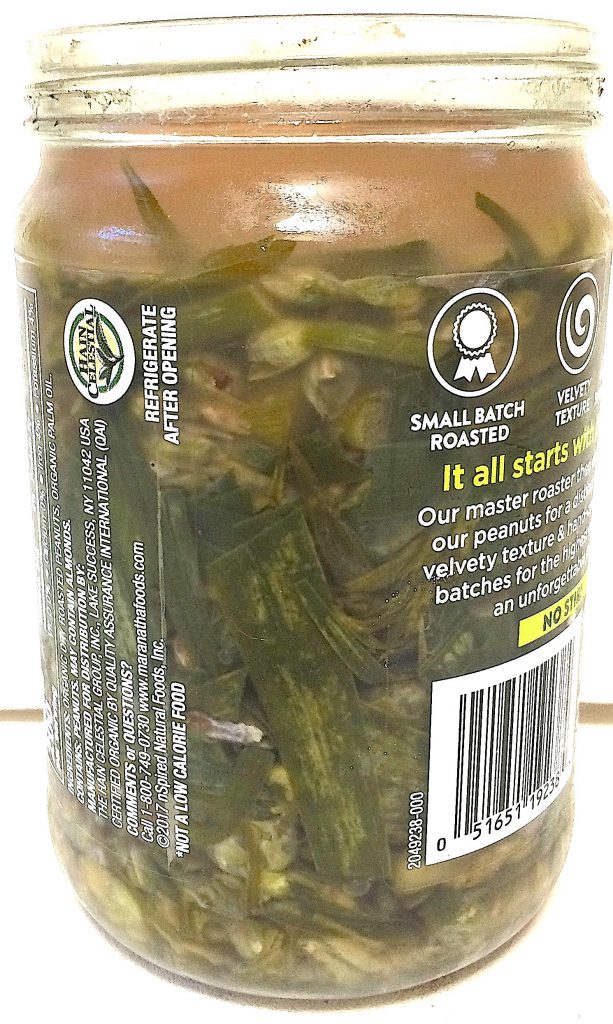
Also blossoming nearly everywhere locally are Spiderworts. The species can be found all year which is good because unlike many plants they don’t go rank as the season go on. However, they like this time of year and are in profusion now. Some folks eat them raw — the entire plant above ground is edible — some cook them. My latest adventure with Spiderwort is to pickle them. Fermenting, like wine making, is an art and you learn many things along the way. Among them is that I, as a bachelor, should not make gallons of any ferment. They do store well but will run you out of house and home. For a while I even had a second refrigerator for my ferments (and a separate room for wine.) Now I make ferments them in small batches… call it “artisan.” Above right is a small batch in a peanut butter jar. I cut the stems into four inch lengths, stuff as many as I can into the jar — pack very, very tightly — push the unopened blossom down on top, then add salty water ( a tablespoon of non-table salt per cup.) On top goes a glass plug to keep the vegetable matter below the surface of the water, which is extremely important. (You can use a suitable rock.) Then put the lid on loosely and put in a saucer and let it work. It will give off gas and liquid. But in a couple of weeks you will have some nice, sour, Spiderwort. I did add a good amount of Poor Man’s Pepper Grass for flavoring. I have an article on Spiderwort here. You can see a video on Spiderwort here. (You Tube is becoming a time machine. I made that video ten years ago this month on a $149 Flip camera. I was pushing 60 in that video, now 70.)

Donations to upgrade EatTheWeeds.com have gone well. Thank you to all who have contributed to either via the Go Fund Me link, the PayPal donation link or by writing to Green Deane POB 941793 Maitland FL, 32794.
This is weekly issue 348.


Great read as usual.
I love mulberries, black fingers and all, despite my brother’s comment years ago about mulberries, “guaranteed a worm in every other bite.”
Oh, I miss suriname cherries. I had a aunt and uncle in Sanford that had suriname’s surrounding their home, black and red.
Thanks for all you do.